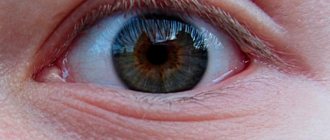Cases of gender dysphoria are tested quite often. People complain about this pathology, confident that nature “made a mistake” in determining his physiological gender. People who actually suffer from this pathology are deeply unhappy. The realization of one's desires in accordance with one's perceived gender is in most cases condemned by society. This causes problems with socialization, creating a family, and self-determination. Confirmed gender dysphoria is quite rare.
Regardless of the imaginary confidence in the presence of a “mistake” of nature or the presence of a real diagnosis, pathology requires treatment by a psychotherapist. Confirmation of the diagnosis requires a thorough medical examination. An important task for the physician is to determine what the patient is suffering from. Gender dysphoria or homosexuality. Delusions of gender reassignment may occur in schizophrenia.
Gender dysphoria in a teenager
Diagnosing gender dysphoria in adolescents requires maximum attention when confirming the diagnosis. When conducting the survey, the following factors are taken into account:
- the desire to choose clothes of the opposite sex;
- repeated statements about belonging to a different gender;
- participation in activities and games that are characteristic of the opposite sex;
- preference for roles of the opposite sex in fantasies and games;
- choosing children of the opposite sex as play partners.
Research shows that about three-quarters of adolescents who were suspected of having a pathology in childhood retain their original gender orientation, but declare their own homosexuality or bisexuality. This comes with the risk of early diagnosis. Accurate confirmation is carried out only after reaching adulthood while maintaining a sense of belonging to the other gender. At an early age, manifestations may be associated with characteristics of socialization in society. Adolescents are often in a state of gender identity disorder associated with the characteristics of the transition period.
Treatment
There are currently no recognized methods for changing one's self-identification in accordance with one's assigned gender. What to do - try to adapt to personal characteristics or carry out hormonal and surgical correction - is chosen by the patient himself. Regardless of the method of solving the problem, people with gender dysphoria need the support of a psychologist. The goals of therapy may be:
- Reducing anxiety levels, identifying and resolving internal conflicts, restoring mental balance, finding peace with oneself.
- Identifying problems with family members, searching for possible solutions, issues of coming out, finding internal and external supports, actions and ways of behavior in a situation of non-acceptance by relatives.
- Increasing comfort in society, mastering new options for self-presentation, assistance in adapting to a new role after taking hormones and surgical correction.
- Mastering self-regulation skills, preventing stressful situations and finding opportunities to successfully resolve them.
In severe emotional states, high levels of anxiety and neuroticism, dysphoria is treated like other mood disorders - by prescribing drug therapy. Antidepressants, tranquilizers, and sedatives can be used. With the right choice of corrective techniques and competent psychological assistance, most patients manage to resolve existing difficulties, find their place in society, and significantly reduce the level of dysphoria.
LGBT-friendly specialists at the Leto clinic know how gender dysphoria is treated. They will help you deal with psychological problems and improve your quality of life. Sign up by phone...
Gender dysphoria in adults
Adults usually already clearly understand their gender identity. Often they choose the life sex of a member of the other sex, changing their job, environment, habits. Factors taken into account during diagnosis in childhood remain the same. An exclusion of homosexuality or bisexuality is required for confirmation. A test is being carried out for schizophrenic mania. Within the framework of psychoses, ideas about one’s own gender identity take a manic form. People who are characterized by inconsistency due to the presence of a disorder demonstrate their actions consistently and not manically.
Therapy
Research by American scientists confirms that transgenderism in itself is not a diagnosis and is not related to sexual orientation. However, treatment is necessary, and the cause of the terrible consequences can be eliminated in the following ways:
- psychotherapy;
- hormone therapy;
- surgical intervention.
It is worth noting: not all transgender people decide to undergo a full course of therapy. Each situation is considered purely individual, and satisfaction with one’s condition can occur at different stages of gender correction.
To receive help and a certificate with a diagnosis of “F64.0 Transsexualism,” the patient must undergo a psychiatric commission. It is carried out with the aim of making an accurate diagnosis (according to the still valid ICD-10). Doctors evaluate the emotional state in order to exclude mental disorders that can provoke false transsexualism. An example of this would be dissociative disorder, in other words, split personality disorder.
After receiving the certificate, the transgender person has several options for further actions:
1. Lifelong use of hormone replacement therapy (HRT).
For women who want to bring their social gender into harmony with their biological gender, courses of taking male hormones are prescribed. Most often, testosterone is administered intramuscularly into the body. For such cases, there is a definition in medicine - FtM (Female to Male), which translated means “from woman to man.”
For men planning to reunite women's spiritual health with physical health, they are prescribed the hormone estrogen. In medical circles, patients are called MtF (Male to Female) - “from man to woman.”
2. Surgical intervention to correct sexual characteristics to the desired type.
FtM removes the mammary glands and shapes the breasts according to the male type, removes the ovaries, appendages and uterus. Finally, phalloplasty is performed - the creation of a male genital organ.
MtF perform cosmetic procedures to soften facial features (optional), and also enlarge breasts and shape female genitalia (vaginoplasty).
In addition to the medical problem, the problem is also solved from the legal side: all documents are drawn up anew with a change in the “gender” column and a new name.
Symptoms and signs of gender dysphoria
The first manifestations are noticeable already in childhood. Those people who may require gender reassignment in the future have noticeable characteristics:
- from the first years they refuse the clothes and behavior patterns characteristic of their physiological sex;
- there is a refusal of the physiological response to physiological needs, for example, girls may try to write from a standing position;
- attempts to confirm one’s belonging to the other sex are persistent;
- The manifestation of gender characteristics in adolescence becomes a tragedy.
Signs may not appear in childhood, but show their presence already in adulthood.
Biological sex
From a biological point of view, a person belongs to the order of primates of the hominid genus (apes, humans and their extinct ancestors), as a result of which he is a representative of one of three types of sex:
- Female - consists of two X chromosomes.
- Male - consists of two different chromosomes, types X and Y.
- Intersex, i.e. chromosomes deviated from the norm and including characteristics of both sexes indicated above. They are also called hermaphrodites.
Everyone knows what distinguishes man as a biological being from his younger relatives:
- presence of consciousness, thinking and speech;
- labor (production of tools);
- the need for spiritual and moral development.
However, homo sapiens is not only a biological, but also a social subject, capable of going against the iron laws of nature.
Psychotherapy (Gender Dysphoria)
Recent studies have confirmed that gender dysphoria is a disorder of intrauterine development, and not a psychiatric pathology. For this reason, people suffering from their own inconsistency with external gender characteristics are now recommended to consult a psychotherapist. But it is required not to choose a course of treatment, but to conduct consultation on self-identification. It is not always easy for people to accept their own differences from those around them. Often a negative attitude towards gender can be observed in a family that is not ready to accept a son instead of a daughter and a daughter instead of a son. Individual and group classes allow you to understand and accept the naturalness of the process of returning to your own gender without depression and unnecessary shock. Lack of treatment can lead to depressive conditions. Such people, in the throes of self-determination, sometimes think about ending their lives.
Reasons for development
The immediate cause of the experience is the discrepancy between internal sensations and external reality. A person who was recorded as a man at birth and has the corresponding anatomical features feels like a woman and vice versa.
The severity varies significantly. Some people only sometimes see themselves as members of the opposite sex. Others categorically do not accept their gender status, undergo hormonal treatment, undergo surgical interventions to change sexual characteristics, and then change their passport data.
The mechanism of formation has not been precisely established. Currently, the dominant theory is that an altered perception of one's gender is established in the prenatal period. Studies have been published indicating differences between the brains of cisgender people and transgender people, however, it has not yet been possible to systematize the differences and explain the nature of the discrepancy between psychological and biological sex.
When determining the question “disease or not,” modern experts speak out unequivocally. Sex and gender discrepancy is not a disease. Gender dysphoria causes suffering and is therefore considered a disease and requires treatment.
Diagnostics
Presents difficulties, especially in a differential context. Long-term monitoring of the dynamic state of things is required, under the supervision of a psychotherapist, or, if indicated, a psychiatrist or endocrinologist. List of events:
- Assessment of the patient's complaints about well-being. Allows you to objectify symptoms and determine the vector of further diagnosis.
- Collecting anamnesis, including psychiatric: are there any specialized diseases, family history, somatic pathologies, risk factors (taking psychoactive substances, smoking, alcoholism).
- Testing the patient to assess the cognitive, emotional and volitional sphere. Next is a blood test for hormones (T3, T4, TSH, prolactin). Encephalography to study the functional activity of brain structures.
The arsenal of a psychotherapist is limited, therefore long-term observation is required. PMDD is characterized by such features as inconstancy (it has a cyclical nature). With continued presence, the diagnosis is revised. Also the clinical picture. Depressive tendencies and suicidal thoughts prevail.
Differential diagnosis is carried out with the following conditions:
Schizotypal process
Sluggish schizophrenia. The main pathology with which dysphoric deviation should be differentiated. Defined by bizarre changes in behavior, obsessive-compulsive symptoms of the type “if I don’t do X, Y will happen,” often of a ridiculous nature, which distinguishes schizophrenia from classic OCD. Affective disorders are noted. The defect forms late, so identifying the pathology is relatively simple.
Schizoaffective process
Read more Orchiepididymitis treatment, what antibiotic? Recurrent schizophrenia. It is characterized by intense affective and psychotic symptoms during periods of attacks (anxiety, severe fear, absurd ideas within the framework of delusions of persecution, delusions of love, hallucinations, pseudohallucinations). Seizures with mental automatism syndrome (Kandinsky-Clerambault) are rare. The defect does not form until the third or fourth attack. Relapses may not occur at all.
Classic fur coat schizophrenia
It is characterized by affective flattening, which worsens as the disease progresses, by delusional ideas, hallucinatory syndrome (either delusions or pseudo-hallucinations in the form of voices prevail). In the first stages, there may be no pronounced productive symptoms. The defect grows quickly. The final state is reached after a different number of years from the first attack (fur coat).
Anxiety syndrome
Determined by the constancy of manifestations. There are no psychotic signs. False fears, phobias, a feeling of impending disaster, increasing self-isolation, and depression appear.
Depression in different variations
Lasts from 3 months to 2 years or more, symptoms are observed constantly, spontaneous relief does not occur. This is the main feature that distinguishes the process from dysphoric deviation.
Panic attacks
They have a paroxysmal nature, lasting from 15 minutes to 2 hours, in rare cases up to a day. There is no cyclical course, they appear in response to an external stimulus (psychotraumatic situation, stress).
Head injuries, a history of drug addiction, and family psychiatric history play a major role in diagnosis. These are factors in the development of serious diseases.









